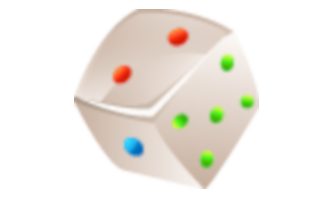Plane Figures: Closed Figure Relationships
Mathematics, Grade 7
Plane Figures: Closed Figure Relationships
Study Guide

Plane Figures: Closed Figure Relationships
Flash Cards

Plane Figures: Closed Figure Relationships
Quiz

Plane Figures: Closed Figure Relationships
Worksheets

Plane Figures: Closed Figure Relationships
Games

Study Guide Plane Figures: Closed Figure Relationships Mathematics, Grade 7
❮
1
/
4
❯
PLANE FIGURES: CLOSED FIGURE RELATIONSHIPS Plane figures in regards to closed figure relationships refer to the coordinate plane and congruent figures, circles, circle graphs, transformations and symmetry. • Congruent figures have the same size and shape. By using coordinates on the coordinate plane, figures can be proven congruent. • Circles are figures that have a center, a diameter and radius. Circles can be congruent if the diameter is the same. • Circle graphs are used to represent 1 unit or 100%. A circle graph can be used to find the angle measure of a part of the circle or the percent of a part of the circle. • Transformations are made up of translations, rotations and reflections. A transformation of a figure can be shown on the coordinate plane. A translation of a figure keeps the size and shape of a figure, but moves it to a different location. A rotation turns a figure about a point on the figure. A reflection of a figure produces a mirror image of the figure when it is reflected in a given line. • Lines of symmetry break a figure into equal parts that are mirror images of each other. © Copyright NewPath Learning. All Rights Reserved. Permission is granted for the purchaser to print copies for non-commercial educational purposes only. Visit us at www.NewPathLearning.com.
How to use plane figures: closed figure relationships Congruent figures have the same size and shape. Two figures drawn on a coordinate plane can be congruent. Circles can be congruent if they also have the same size and shape. For example, are the circles congruent? The circles are not congruent because the diameters are different. One has a diameter of 10 and the other has a diameter of 8. Circle graphs are used to represent 1 unit or 100%. If a circle graph has a section that represents 45%, the angle measure can be found by multiplying 45% ·360°. A circle graph can also be used to find the percent. For example, if a circle graph represents 500 children with different color hair and 350 have brown hair, what percent would that be? Ex. 350 ÷ 500 = .7 or 70% have brown hair. Transformations are translations, rotations and reflections. • A translation moves a figure while maintaining its size and shape. If a figure is drawn in the coordinate plane, the coordinates can be translated or moved. A translation of 4 units to the right and 3 units up can be found by adding 4 to the x coordinate and adding 3 to the y coordinate of each point in the original figure. • A rotation turns a figure a certain number of degrees about a point in a figure. For example, what would a 90° counter-clockwise rotation about point A look like? © Copyright NewPath Learning. All Rights Reserved. Permission is granted for the purchaser to print copies for non-commercial educational purposes only. Visit us at www.NewPathLearning.com.
The rectangle when rotated, retains its size and shape, but is turned. The point B has been turned 90° to become point B'. • A reflection is a mirror image of a figure about a line. For example, the letter T reflected in the y-axis would look as follows: Line of symmetry breaks a figure into equal parts that are mirror images. A heart has vertical line symmetry because it is the only way to break a heart into equal parts that are mirror images of each other. © Copyright NewPath Learning. All Rights Reserved. Permission is granted for the purchaser to print copies for non-commercial educational purposes only. Visit us at www.NewPathLearning.com.
Try This! 1. Are the figures shown congruent? 2. If a circle graph represents 150 students and 99 are girls, what percent are girls? 3. The coordinates of a triangle are (1, 2), (5, 2) and ((3, 4). What are the coordinates of a new triangle after a translation of 3 to the left and 5 down? 4. Do the figures show a 90° clockwise rotation? 5. What does the letter U in quadrant I, look like when it is reflected in the x-axis? 6. How many lines of symmetry does the letter I have? © Copyright NewPath Learning. All Rights Reserved. Permission is granted for the purchaser to print copies for non-commercial educational purposes only. Visit us at www.NewPathLearning.com.
